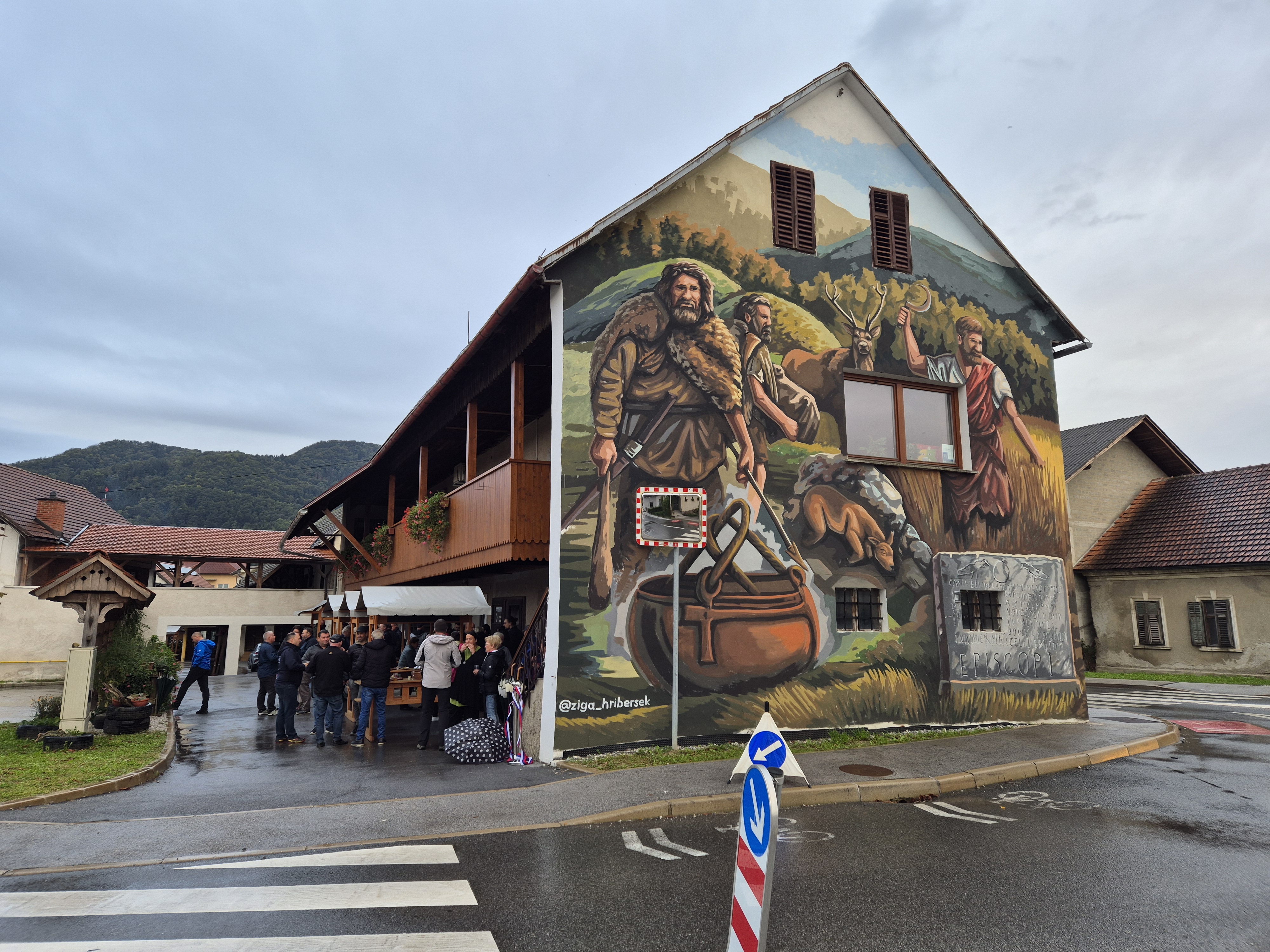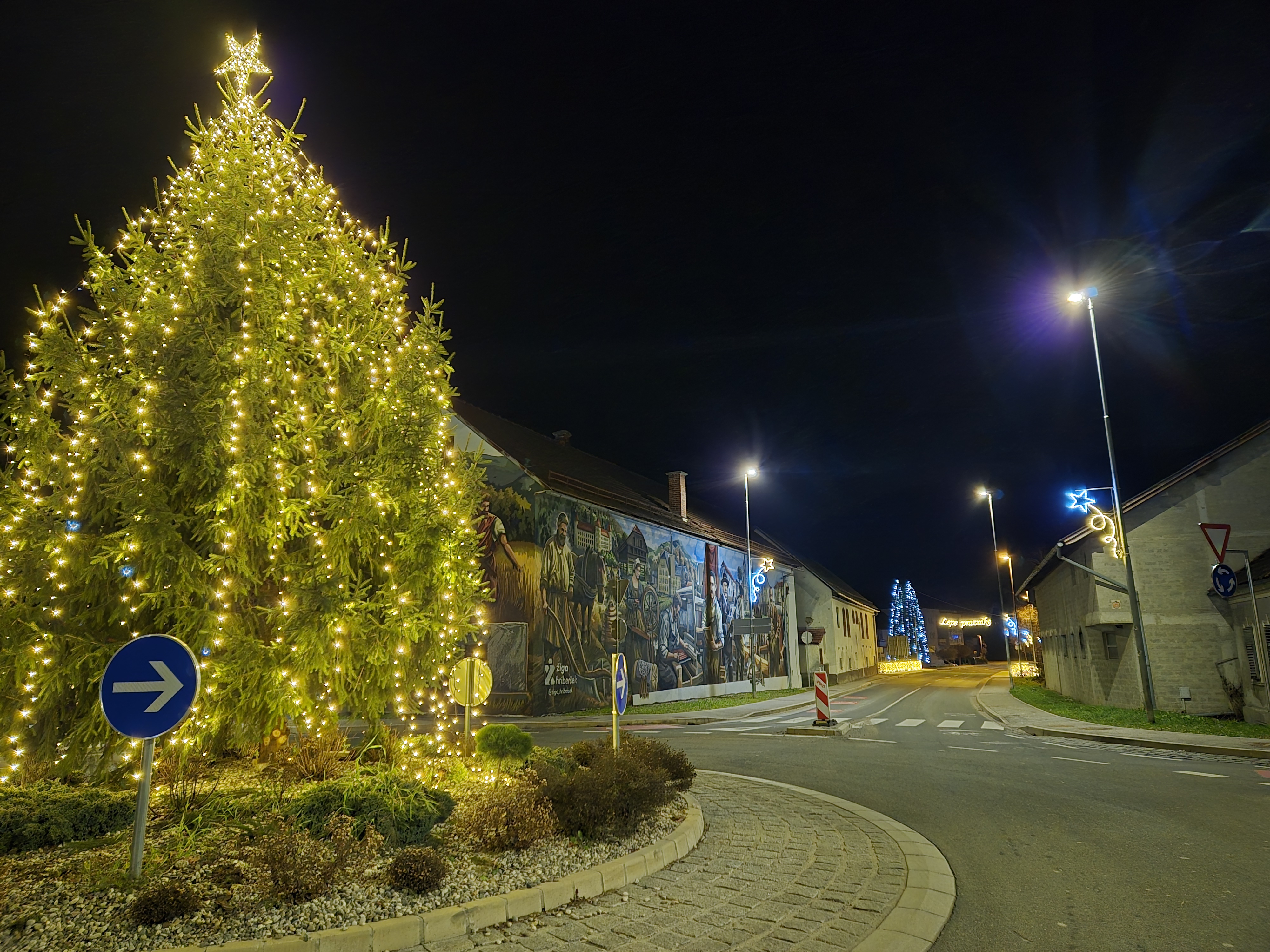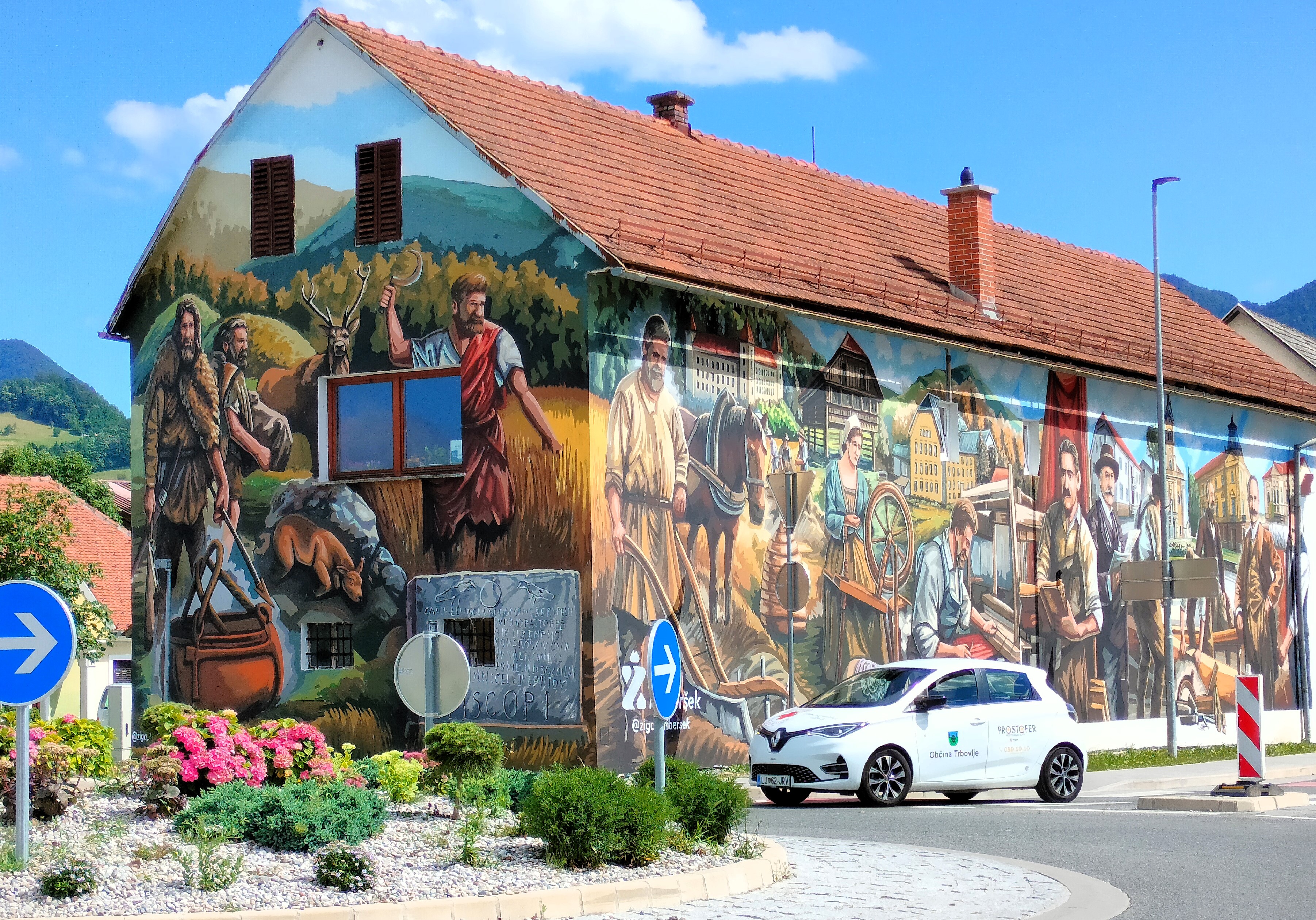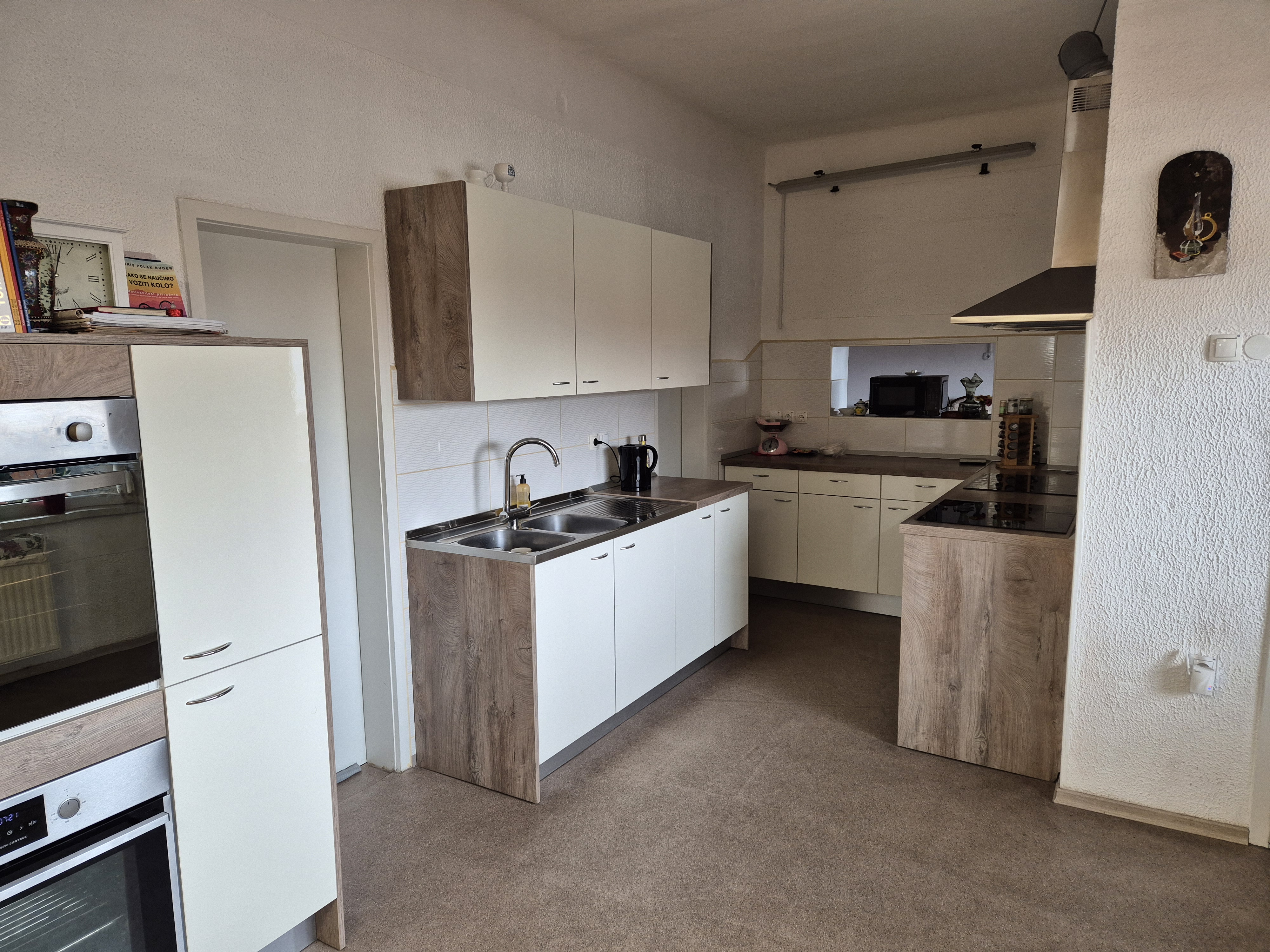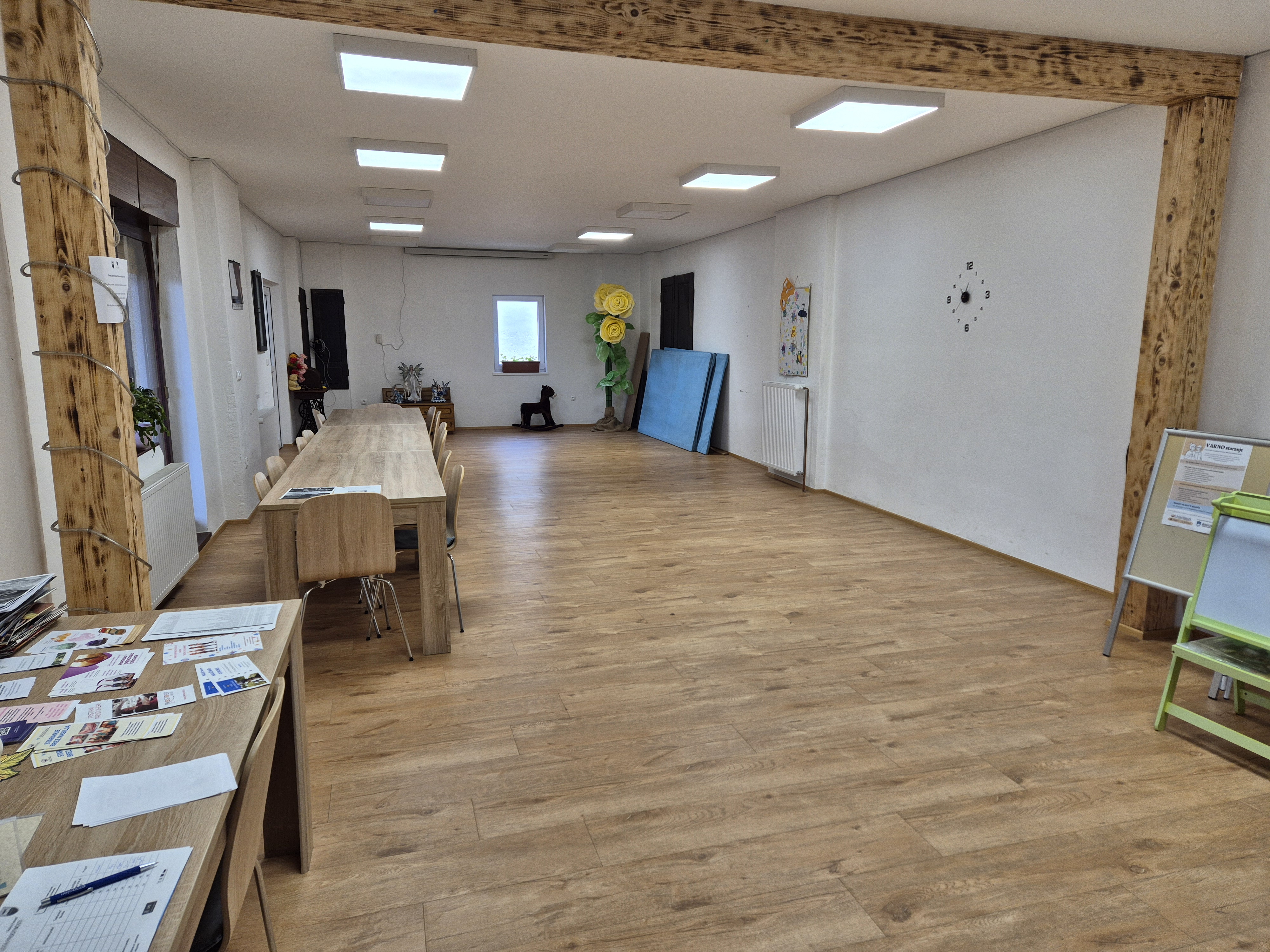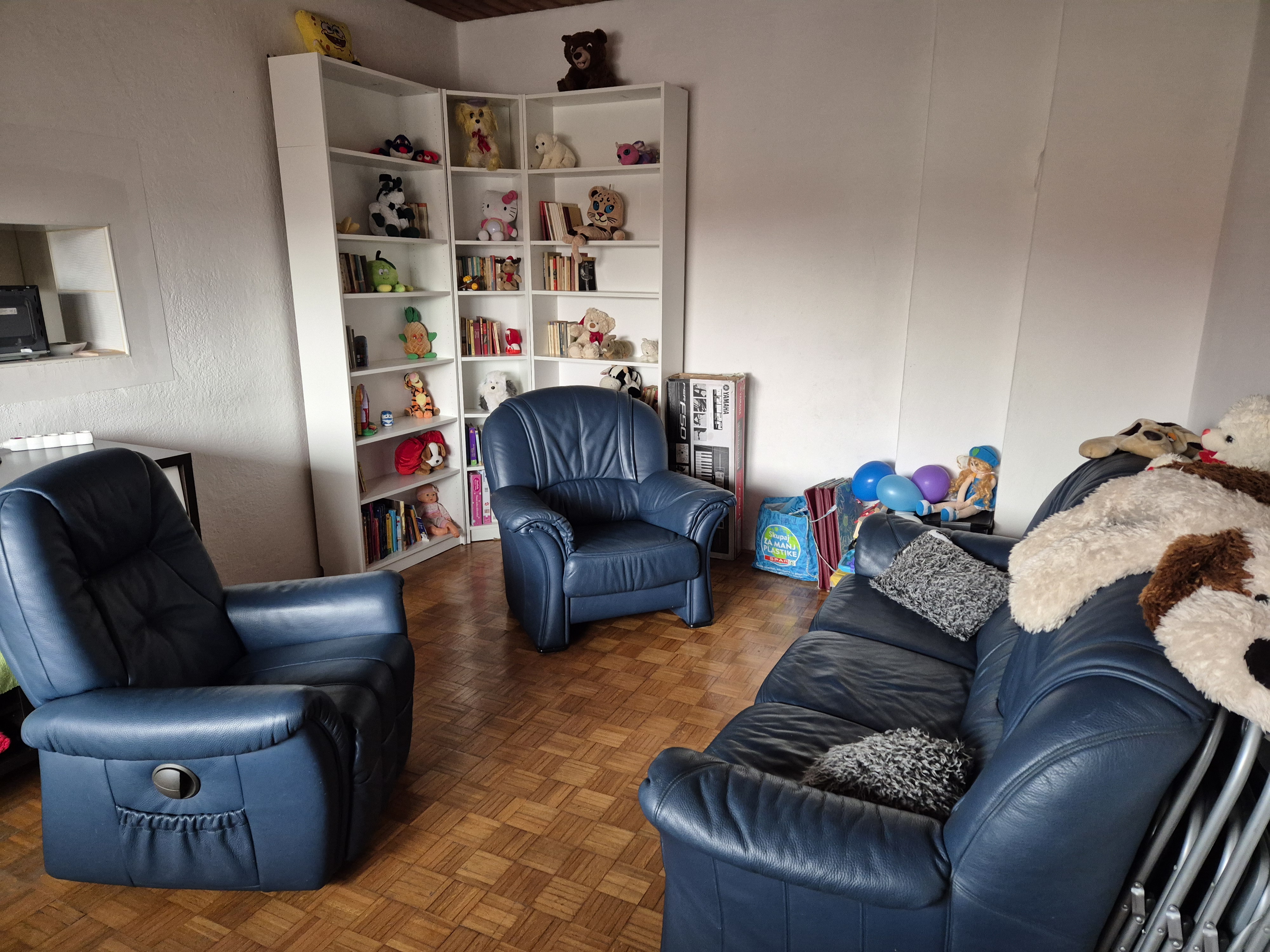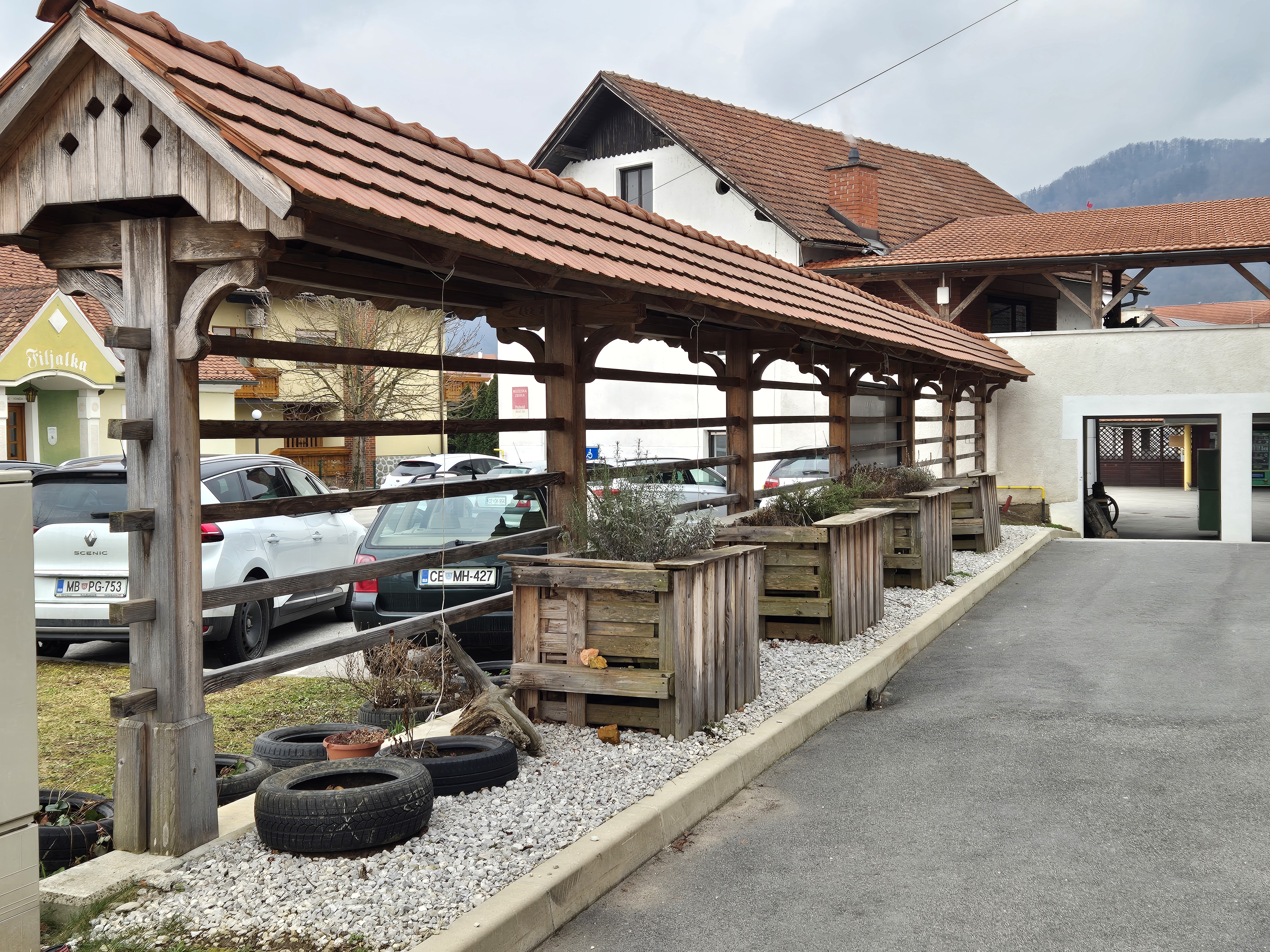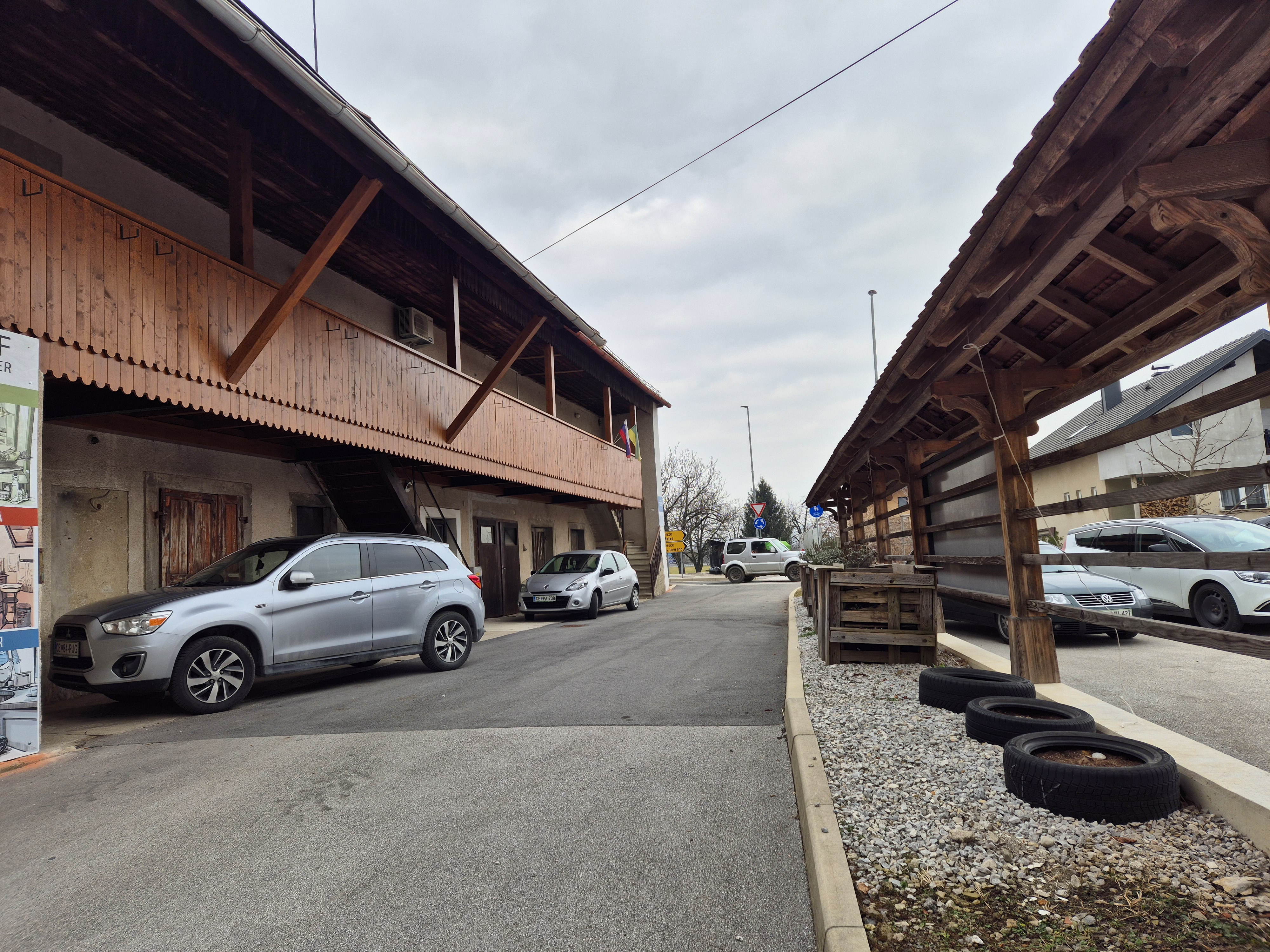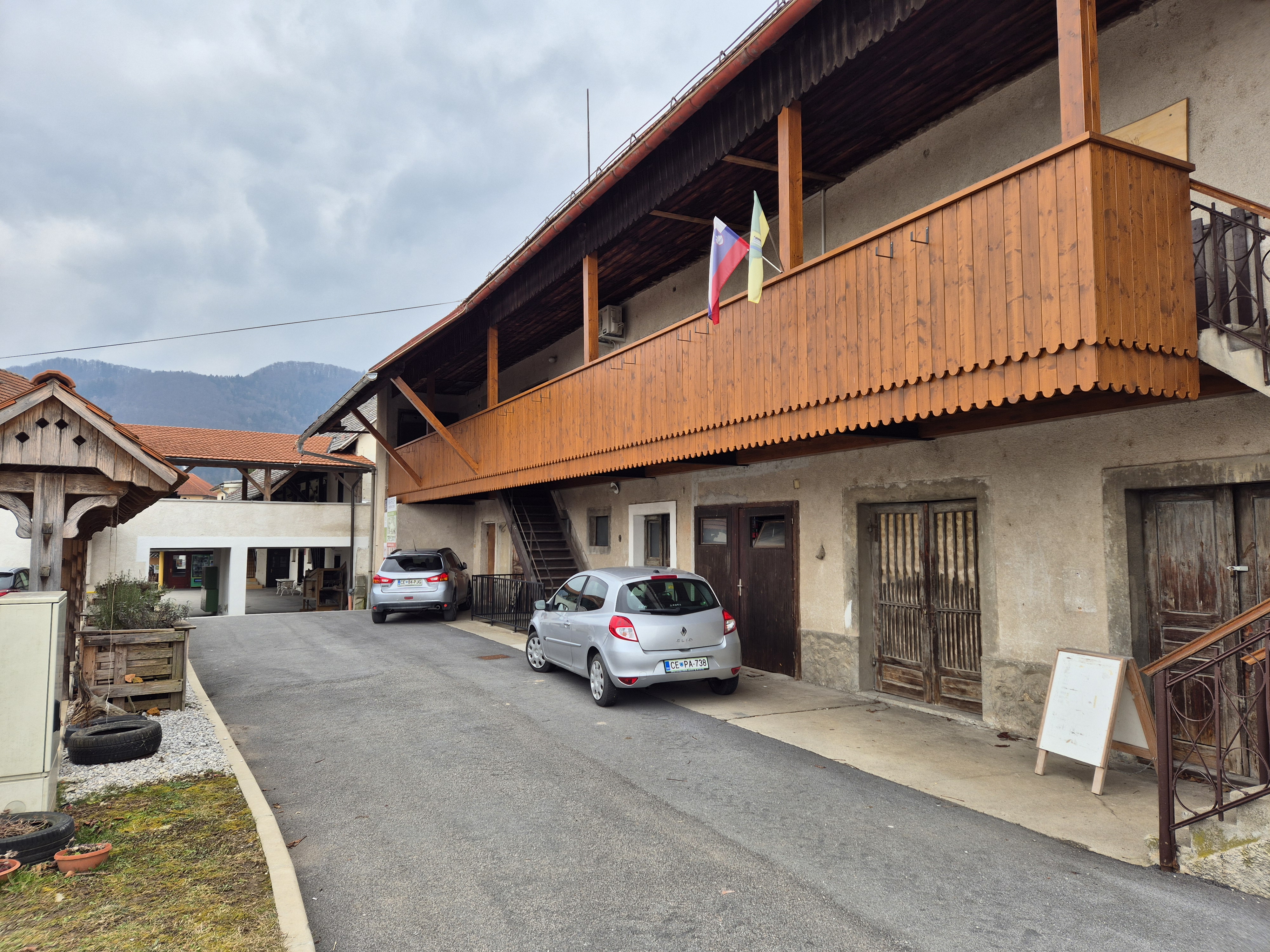CG - Connecting generations
Intergenerational Center: Connecting Generations, Enriching Lives
Connecting generations! Our Intergenerational Center is a vibrant space where young and old connect, share, and learn from eachother. Through engaging activities, shared experiences, and meaningful conversations, we build bridges between generations, fostering a stronger, more connected community. Join us in creating a future where wisdom meets curiosity, and friendships know no age!
Slovenia
Dolenja vas 53, 3312 Prebold, Slovenia
Prototype level
Yes
Yes
Yes
Yes
EAFRD : European Agricultural Fund for Rural Development
An fund from Local active group for rural development, in 2020.
No
174: Prebold (SI)
Our initiative aims to foster meaningful connections between generations by creating a welcoming space where people of all ages can come together, learn from one another, and build a stronger sense of community. By bridging generational gaps, we promote mutual understanding, social inclusion, and lifelong learning.
Target Groups
• Seniors looking for social engagement, purpose, and opportunities to share their knowledge.
• Children and young people eager to learn, interact, and benefit from the wisdom and experience of older generations.
• Families and individuals of all ages who want to participate in community-driven activities and build intergenerational relationships.
Specific Objectives
• Provide free activities that encourage interaction, such as workshops, cultural events, storytelling, and skill-sharing sessions.
• Create opportunities for knowledge exchange, where older generations can mentor younger ones in life skills, crafts, and traditions while also learning from them.
• Reduce social isolation among seniors and strengthen community bonds.
• Promote active aging by involving older adults in meaningful, engaging activities.
• Encourage volunteerism and community participation across different age groups.
Expected Outcomes
• Increased social inclusion and reduced loneliness, especially among seniors.
• Strengthened community ties through regular interaction and shared experiences.
• Improved well-being and mental health for all participants through active engagement.
• Greater appreciation and respect between generations, fostering a culture of support and lifelong learning.
• A sustainable, community-led initiative that continues to evolve based on the needs and interests of its participants.
Through this initiative, we aim to create a vibrant, supportive environment where generations come together, friendships flourish, and everyone feels valued.
Target Groups
• Seniors looking for social engagement, purpose, and opportunities to share their knowledge.
• Children and young people eager to learn, interact, and benefit from the wisdom and experience of older generations.
• Families and individuals of all ages who want to participate in community-driven activities and build intergenerational relationships.
Specific Objectives
• Provide free activities that encourage interaction, such as workshops, cultural events, storytelling, and skill-sharing sessions.
• Create opportunities for knowledge exchange, where older generations can mentor younger ones in life skills, crafts, and traditions while also learning from them.
• Reduce social isolation among seniors and strengthen community bonds.
• Promote active aging by involving older adults in meaningful, engaging activities.
• Encourage volunteerism and community participation across different age groups.
Expected Outcomes
• Increased social inclusion and reduced loneliness, especially among seniors.
• Strengthened community ties through regular interaction and shared experiences.
• Improved well-being and mental health for all participants through active engagement.
• Greater appreciation and respect between generations, fostering a culture of support and lifelong learning.
• A sustainable, community-led initiative that continues to evolve based on the needs and interests of its participants.
Through this initiative, we aim to create a vibrant, supportive environment where generations come together, friendships flourish, and everyone feels valued.
connection
inclusion
lifelong learning
well-being
community
Our intergenerational center is built on the principles of social, environmental, and economic sustainability, ensuring long-term benefits for both the community and the environment. Instead of building a new facility, we have repurposed and renovated an old residential house, giving it a new life as a community hub. This approach reduces construction waste, preserves cultural heritage, and promotes sustainable urban development. By maintaining the building’s original structure while upgrading it for modern use, we balance tradition with innovation. On the ground floor we are planning to open a handicraft center, where we will connect specialists from all over the valley to show and preserve the skills they have. Which in some cases also encourages a repair rather than replace mentality. (Reduce waste by learning how to fix things, provide an affordable alternative to purchasing new products, supporting local handymans) By connecting generations, we ensure the transfer of knowledge and skills, which is essential for a resilient society. The center offers free activities that promote social cohesion, reduce loneliness, and encourage mutual support, fostering a community that thrives together. We prioritize energy efficiency and responsible resource use by: Using energy-saving lighting and appliances, encouraging waste separation, recycling, promoting the use of sustainable. To ensure longevity, we actively involve the local community in the decision-making and operational aspects of the center. Volunteers, businesses, institutions are invited to collaborate, ensuring that the initiative remains dynamic, relevant. This initiative serves as a model of sustainable community development by demonstrating how old spaces can be repurposed, waste can be minimized through repair initiatives, and social sustainability can be achieved through cooperation. Our approach shows that with planning, sustainability is not just an idea but a tangible and impactful reality.
Our intergenerational center is designed to be more than just a functional space—it is a place where people of all ages feel welcome, inspired, and emotionally connected. Through thoughtful design, cultural elements, and sustainability, we have created an environment that fosters positive emotions, creativity, and a sense of belonging. The center is furnished with new furniture, ensuring comfort and functionality. Some furniture pieces were recycled and repurposed, aligning with our commitment to sustainability while also preserving a sense of history and authenticity. The interior is designed to be warm, inviting, and adaptable, with open spaces for interaction and cozy corners for reflection. The most remarkable feature of the center is its facade, which proudly displays a large artwork depicting the history of our city. This serves as an educational piece and a conversation starter, connecting visitors with the rich cultural heritage of the community. The mural transforms the building into a local landmark, making it instantly recognizable.
The space is designed to encourage positive emotions, whether through natural light, comfortable seating, or a layout that promotes interaction. The cultural aspect of the center—workshops, storytelling sessions, and the visual narrative on the facade—provides visitors with a sense of pride and identity. The design ensures that the space is welcoming to all, regardless of age or mobility.
Our initiative sets an example of how aesthetic and cultural value can enhance public spaces. By combining art, sustainability, history, and human-centered design, the center becomes a model for community-driven, intergenerational spaces that are not only functional but also emotionally and culturally enriching.
The space is designed to encourage positive emotions, whether through natural light, comfortable seating, or a layout that promotes interaction. The cultural aspect of the center—workshops, storytelling sessions, and the visual narrative on the facade—provides visitors with a sense of pride and identity. The design ensures that the space is welcoming to all, regardless of age or mobility.
Our initiative sets an example of how aesthetic and cultural value can enhance public spaces. By combining art, sustainability, history, and human-centered design, the center becomes a model for community-driven, intergenerational spaces that are not only functional but also emotionally and culturally enriching.
Our intergenerational center is built on the principles of inclusion, accessibility, and community participation. We strive to create a space where everyone regardless of age, background, or financial situation can feel welcome, engaged, and empowered. The majority of activities are free of charge, ensuring that financial barriers do not prevent participation. If fees are required, they are kept to a minimum, making the center accessible to as many people as possible. Local individuals and groups can use the space for their own activities, encouraging community ownership and engagement. The center is easily reachable, with a nearby parking area providing convenient access for visitors. While an elevator is not yet in place, it is planned for future construction to ensure full mobility access for people with disabilities and elderly visitors. The space is big and open to accommodate different needs. Local residents are encouraged to suggest, organize, and lead activities, ensuring diverse voices are heard. A participatory governance model allows for collaborative decision-making, ensuring that the center remains relevant to the needs of its users. The center brings together people of all ages, fostering relationships between generations. Activities are designed to encourage exchange, collaboration, and learning, helping to bridge societal gaps and promote mutual respect. Our initiative serves as a model for inclusive community spaces, proving that affordability, accessibility, and community ownership can go hand in hand. By continuously improving infrastructure, keeping activities low-cost or free, and allowing local engagement, we create a truly open space that welcomes everyone, regardless of background or ability. This project highlights how small, thoughtful actions—from universal design principles to inclusive programming—can reshape societal models and create stronger, more connected communities.
Our initiative is built by and for the community, ensuring that citizens and civil society organizations play an active role in shaping its development. Their involvement has not only influenced decision-making but also strengthened the impact, sustainability, and long-term success of the initiative. Citizens have been directly involved in planning programs and activities.
Feedback from locals has helped tailor the initiative to their real needs (e.g., prioritizing free activities and accessibility). Locals are given opportunities in organizing events, workshops. Because the space belongs to the people, it ensures long-term engagement. Activities are designed based on real needs rather than assumptions. It is all about sharing knowledge and skills. Elderly citizens contribute traditional, while younger generations teach digital. Local groups help organize events, workshops, and educational programs. Contributing skills and knowledge strengthens social bonds. The initiative relies on volunteerism and resource-sharing, reducing costs. Citizens have participated in the historical mural’s concept and design, reflecting the shared heritage of the community. The space is also open for exhibitions, performances, and cultural expression. Which leads to stronger cultural identity and also to increased visibility and tourism. The initiative acts as a connector between generations, cultures, and professions, fostering stronger community resilience. Our participatory approach demonstrates how citizens and civil society can successfully revitalize spaces and create meaningful programs. By sharing our best practices, we hope to inspire similar initiatives in other communities. By placing citizens at the heart of the initiative, we ensure long-term sustainability, strong community engagement, and a lasting impact. This is not just a project—it is a living, evolving space shaped by those who use it. The more people engage, the stronger and more meaningful it becomes.
Feedback from locals has helped tailor the initiative to their real needs (e.g., prioritizing free activities and accessibility). Locals are given opportunities in organizing events, workshops. Because the space belongs to the people, it ensures long-term engagement. Activities are designed based on real needs rather than assumptions. It is all about sharing knowledge and skills. Elderly citizens contribute traditional, while younger generations teach digital. Local groups help organize events, workshops, and educational programs. Contributing skills and knowledge strengthens social bonds. The initiative relies on volunteerism and resource-sharing, reducing costs. Citizens have participated in the historical mural’s concept and design, reflecting the shared heritage of the community. The space is also open for exhibitions, performances, and cultural expression. Which leads to stronger cultural identity and also to increased visibility and tourism. The initiative acts as a connector between generations, cultures, and professions, fostering stronger community resilience. Our participatory approach demonstrates how citizens and civil society can successfully revitalize spaces and create meaningful programs. By sharing our best practices, we hope to inspire similar initiatives in other communities. By placing citizens at the heart of the initiative, we ensure long-term sustainability, strong community engagement, and a lasting impact. This is not just a project—it is a living, evolving space shaped by those who use it. The more people engage, the stronger and more meaningful it becomes.
The success of our intergenerational center is rooted in the collaboration of stakeholders at multiple levels, ensuring that the initiative is both community-driven and widely supported. A local artist, known for other large-scale murals in the city, painted the historical facade, making the center an integral part of the city's cultural identity. The community was actively involved in shaping the initiative, with locals providing input, feedback, and even volunteering to help with activities and space management. The center remains open for local organizations and individuals to use for their own activities, fostering a strong sense of ownership and belonging. The initiative aligns with regional efforts to preserve cultural heritage, ensuring that revitalized spaces retain historical and artistic value. The ambitious plan to extend the mural to the neighboring house will create the largest fresco in Slovenia, making it a landmark of national significance and attracting broader recognition. The project reflects EU values of sustainability, social inclusion, and cultural preservation, making it a potential case study for European funding programs and cross-border collaborations. By showcasing how intergenerational spaces can be aesthetically inspiring, socially inclusive, and community-driven, it serves as a model for similar initiatives in other European cities.
Through this multi-level engagement, the initiative is not just a local project but a growing cultural and social movement, proving how collaboration across different sectors can lead to meaningful and lasting impact!
Through this multi-level engagement, the initiative is not just a local project but a growing cultural and social movement, proving how collaboration across different sectors can lead to meaningful and lasting impact!
Our intergenerational center reflects an interdisciplinary approach, integrating expertise from art, social sciences, architecture, sustainability, community development, and cultural heritage. By bringing together professionals from different fields, we have created a holistic, inclusive, and sustainable space that serves as both a social hub and a cultural landmark. Architects helped transform an old residential house into a functional and accessible public space while preserving its original character. The center fits seamlessly into the existing city infrastructure, with parking nearby and a planned elevator to improve accessibility. A local artist designed and painted the historical mural on the facade, blending artistic expression with urban identity. Human studies experts contributed by designing programs that foster intergenerational exchange, combat loneliness, and promote active aging. Community leaders and volunteers play a key role in ensuring the center remains relevant, inclusive, and welcoming for all age groups. We adapted energy-efficient renovations, waste reduction, and reuse of furniture to align the project with eco-friendly principles. The planned handicraft center on the ground floor will offer another variety of possibility for sharing experience. By bringing together professionals from diverse fields, we have created a vibrant, sustainable, and community-driven space. The interaction between different disciplines has resulted in: A well-designed, functional space that balances modern needs with historical preservation. A socially impactful initiative that fosters connections across generations. A culturally significant project that enhances urban identity and artistic expression. A model of sustainability and circular economy in action. This process demonstrates the power of cross-sector collaboration, serving as an exemplary initiative that can inspire similar projects across Europe!
Our intergenerational center goes beyond traditional community spaces by integrating art, sustainability, social inclusion, and cultural heritage into a single, dynamic initiative. Compared to mainstream community projects, our approach is more holistic, visually impactful, and deeply rooted in community ownership. Instead of constructing a new building, we revitalized an existing residential house, preserving its character while adapting it for modern needs. This approach reduces waste, promotes sustainable urban renewal, and maintains a sense of historical continuity. While most community centers focus purely on functionality, our initiative combines social purpose with large-scale public art. The historical mural on the facade, painted by a renowned local artist, turns the center into a cultural landmark, making history accessible and engaging. The planned expansion of the mural onto the next building to create the largest fresco in Slovenia adds a unique artistic and heritage-driven dimension. Many community centers cater to specific age groups, whereas our initiative actively bridges generations, encouraging interaction between young and old. The majority of activities are free or low-cost, ensuring that financial barriers do not prevent participation. Instead of a top-down management structure, our center is community-led, meaning that local residents shape its programs and activities. The space is open for locals to use for their own initiatives, promoting grassroots engagement and adaptability. Unlike mainstream community spaces that focus on either functionality, social work, or artistic expression in isolation, our center uniquely combines all these elements into one cohesive initiative. It is not just a space—it is a cultural and social movement. It does not just host events—it transforms the way generations connect. It is not just a renovation—it is a sustainable, community-driven model of urban renewal.
Our initiative is built on a community-driven, interdisciplinary, and sustainability-focused approach that ensures long-term impact and inclusivity. The methodology integrates bottom-up participation, cultural preservation, and intergenerational engagement, making it a unique model for community. We prioritize community involvement at every stage—from planning to implementation—ensuring the center reflects real local needs. The space is open for residents to organize their own activities, encouraging a sense of ownership and responsibility. The center is designed for all age groups, with activities that foster interaction between generations. Programs encourage knowledge exchange, from seniors teaching traditional skills to young people sharing digital literacy. A focus on affordable (or free) access ensures financial limitations don’t exclude participants. The project repurposes an old residential house, minimizing environmental impact and preserving architectural heritage. Furniture and materials are recycled or upcycled where possible, reducing waste. The handyman center promotes a repair and reuse culture, reducing landfill waste and supporting sustainability. The mural on the facade was designed by a renowned local artist, embedding the center within the city’s cultural and historical narrative. Art is used as a tool for education, dialogue, and urban identity-building. The methodology is not tied to one location—it can be adapted and applied in other cities looking to revitalize spaces and connect generations. The combination of community participation, sustainability, and cultural engagement provides a blueprint for similar initiatives in Europe and beyond. This methodology ensures that the initiative is not just a space, but a living, evolving social experiment that fosters inclusion, sustainability, and cultural connection. By combining multiple disciplines and stakeholder participation, it creates a long-lasting, high-impact model for social innovation.
Our initiative provides a scalable and adaptable model that can be replicated in different urban, rural, and cultural contexts. By focusing on community engagement, sustainability, and intergenerational connection, key aspects of our approach can be transferred to other places, groups of beneficiaries, and contexts. First idea is to change underused or abandoned buildings into functional community spaces. Because many towns and cities have old, underutilized buildings that could be repurposed instead of demolished. For example: identify vacant or underused buildings with community potential, then involve local residents and stakeholders in shaping the purpose and design. That will have an impact in cities and towns worldwide, which can breathe new life into historic buildings while preserving their cultural identity and heritage. Another idea is to create a shared space where different generations learn from eachother – it can be transferable because the need for intergenerational connection is universal. This model can be adapted to schools, libraries, cultural centers, or urban public spaces to encourage cross-generational exchange. Another idea: Instead of throwing things away, try to promote a repair and reuse mindset through a handyman workshop, because the problem of waste and disposable culture is global. Also using large scale-art can be transferable to transform public spaces and tell local stories. Any city can revitalize public spaces and create artistic landmarks that attract visitors and boost local pride.
Through sustainability, social inclusion, cultural preservation, and intergenerational connection, we demonstrate how small-scale, grassroots initiatives can contribute to solving broader global issues. Aging populations and urbanization have led to growing social isolation, particularly among elderly individuals. Our initiative bridges generations by offering a shared space where young and old interact through activities such as workshops, storytelling, and skill-sharing. By fostering interpersonal connections, we combat loneliness, improve mental well-being, and preserve cultural knowledge. Excessive waste production and the rise of disposable culture contribute to environmental degradation. That’s why we instead of constructing a new building, we renovated an old house, reducing resource consumption and waste. We promote upcycling and reuse, sourcing furniture and materials sustainably. Many urban areas face neglect and decay, with older buildings being demolished instead of repurposed and therefor communities often lose their cultural identity due to modernization and globalization. We revitalized a neglected space, transforming it into a community hub with cultural significance. Our historical mural on the facade serves as a public storytelling piece, connecting locals to their heritage. We provide free community access to the space, allowing locals to use it for events, workshops, and educational programs. Our initiative ensures that most activities are free of charge, or have only a minimal fee. We operate on a low-cost, community-led model, reducing dependence on funding bodies and ensuring long-term sustainability. By keeping participation affordable and inclusive, we strengthen community ties and make culture and education accessible to all. The initiative promotes skill-building for all ages, increasing self-sufficiency and community resilience. Big problems don’t always need big solutions—sometimes, the most effective change starts at the local level.
Our initiative continues to evolve, staying true to the core New European Bauhaus (NEB) values of sustainability, inclusion, and aesthetics. Future plans focus on enhancing accessibility, expanding community-driven activities, and integrating environmentally friendly solutions, ensuring that the space remains a vibrant hub for intergenerational exchange. So far, we incorporated all three NEB Values: Transforming a historic residential space into a functional community center, reducing construction waste and preserving its cultural value. A mix of new and repurposed furniture aligns with a circular economy approach. For aesthetics value we incorporated a unique Public Artwork – The facade features a large-scale mural illustrating the history of the city, fostering a strong connection between past and present. Comfortable and welcoming interior design – A mix of modern and traditional elements ensures that the space feels both inclusive and inspiring. The initiative includes exhibitions, performances, and community events, enriching the cultural fabric of the area. As for inclusion – we offer free and affordable activities – Ensuring accessibility for all socio-economic groups. Community-driven governance – Locals are actively involved in shaping the programs and managing the space which is accessible for everyone.
In the future we are planning to install an elevator, open a handicraft center, we will expand the fresco on the mural. We will strive to green upgrades (even more recycling and energy-efficient solutions). And we will connect with similar organizations in the neighborhood and further. By embracing the NEB principles of sustainability, beauty, and inclusion, this initiative is not just transforming a space—it is revitalizing a community. Through thoughtful design, environmental responsibility, and active citizen participation, it is setting a new standard for community-driven urban regeneration that can inspire similar projects across Europe.
In the future we are planning to install an elevator, open a handicraft center, we will expand the fresco on the mural. We will strive to green upgrades (even more recycling and energy-efficient solutions). And we will connect with similar organizations in the neighborhood and further. By embracing the NEB principles of sustainability, beauty, and inclusion, this initiative is not just transforming a space—it is revitalizing a community. Through thoughtful design, environmental responsibility, and active citizen participation, it is setting a new standard for community-driven urban regeneration that can inspire similar projects across Europe.

